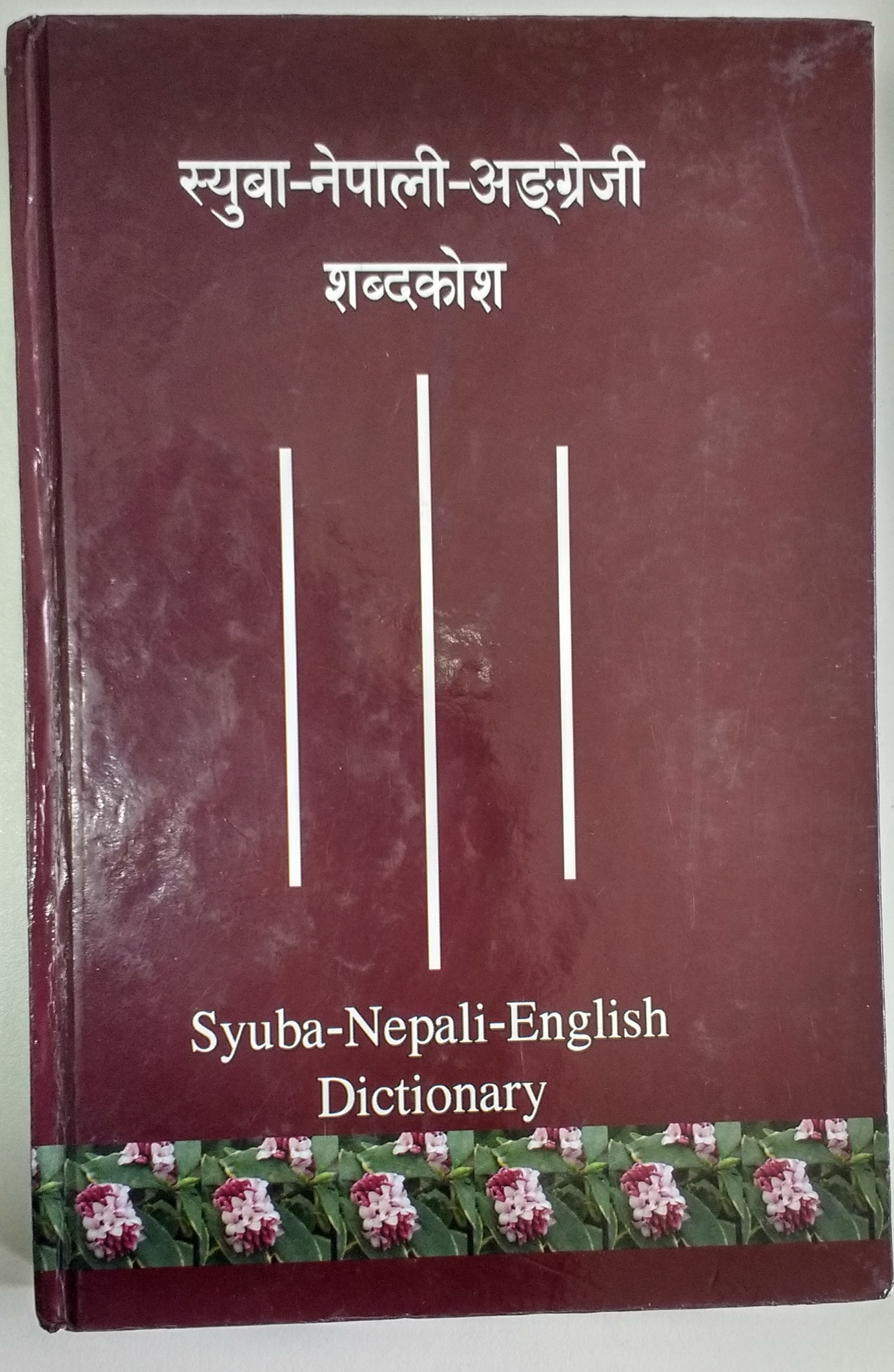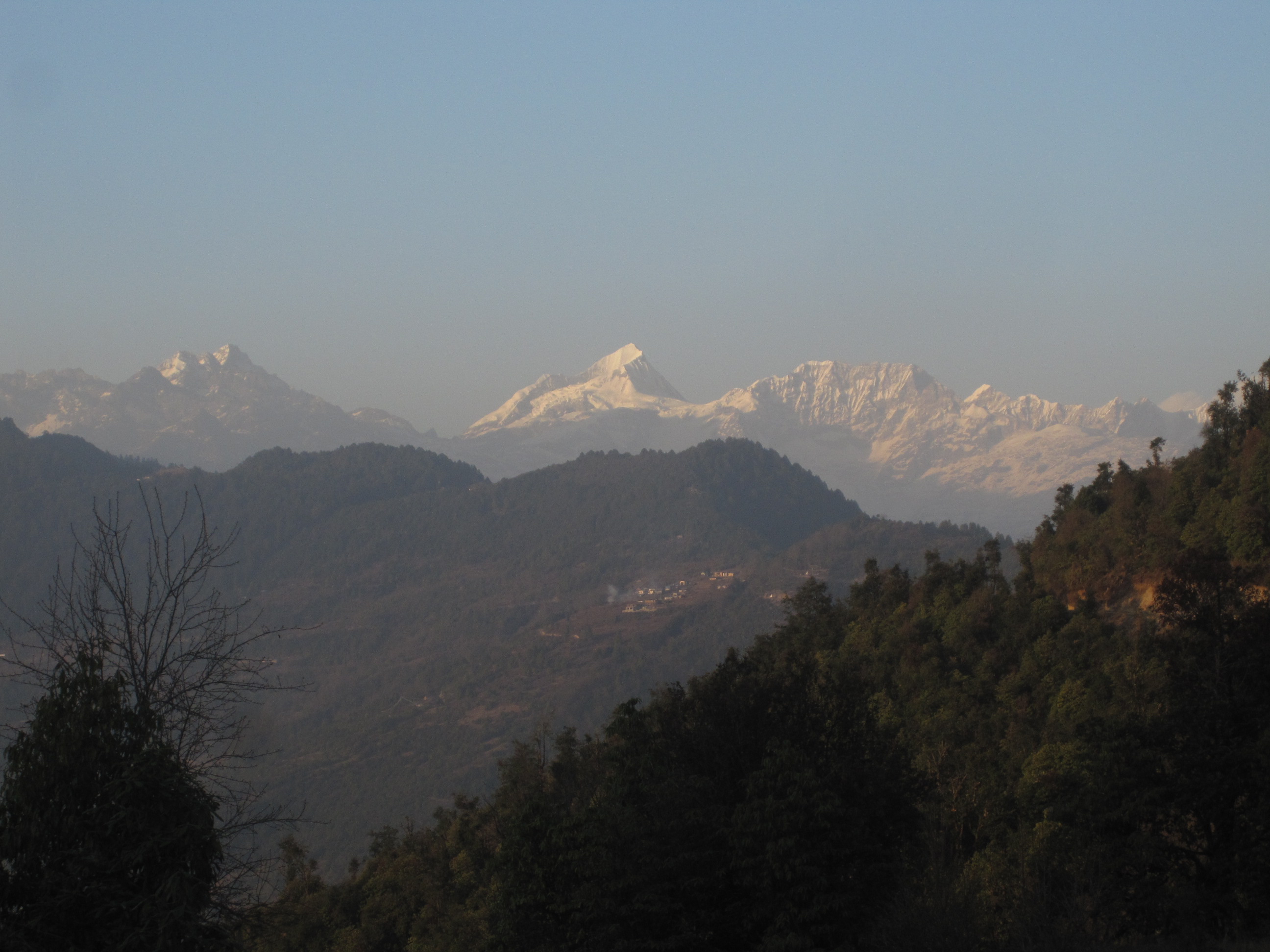|
Kyirong–Kagate Languages
Kyirong–Kagate is a subgroup of Tibetic languages spoken primarily in Nepal, with a hundred or so speakers across the border in Tibet. Varieties are:N. Tournadre (2005) "L'aire linguistique tibétaine et ses divers dialectes." ''Lalies'', 2005, n°25, p. 7–5/ref> : Kyirong language, Kyirong (Lende), Kagate, Tsum, Langtang, Yolmo (Helambu Sherpa), Nubri, Gyalsumdo Although there is a varying degree of mutual intelligibility between these varieties, they are considered separate languages by their respective speakers. There are also some major distinctions. For example, Kyirong has a three-tone system whereas Yolmo and Kagate have a two-tone system. The Gyalsumdo language variety spoken in the Manage district of Nepal shows strong similarities to Kyirong, as well as Nubri, and would therefore likely be classed in the "Kyirong–Kagate" group. Terminological limitation The language family is best considered to really be Kyirong–Yolmo. This is for a number of r ... [...More Info...] [...Related Items...] OR: [Wikipedia] [Google] [Baidu] |
Nepal
Nepal (; ne, नेपाल ), formerly the Federal Democratic Republic of Nepal ( ne, सङ्घीय लोकतान्त्रिक गणतन्त्र नेपाल ), is a landlocked country in South Asia. It is mainly situated in the Himalayas, but also includes parts of the Indo-Gangetic Plain, bordering the Tibet Autonomous Region of China to the north, and India in the south, east, and west, while it is narrowly separated from Bangladesh by the Siliguri Corridor, and from Bhutan by the Indian state of Sikkim. Nepal has a diverse geography, including fertile plains, subalpine forested hills, and eight of the world's ten tallest mountains, including Mount Everest, the highest point on Earth. Nepal is a multi-ethnic, multi-lingual, multi-religious and multi-cultural state, with Nepali as the official language. Kathmandu is the nation's capital and the largest city. The name "Nepal" is first recorded in texts from the Vedic period of the India ... [...More Info...] [...Related Items...] OR: [Wikipedia] [Google] [Baidu] |
China
China, officially the People's Republic of China (PRC), is a country in East Asia. It is the world's most populous country, with a population exceeding 1.4 billion, slightly ahead of India. China spans the equivalent of five time zones and borders fourteen countries by land, the most of any country in the world, tied with Russia. Covering an area of approximately , it is the world's third largest country by total land area. The country consists of 22 provinces, five autonomous regions, four municipalities, and two Special Administrative Regions (Hong Kong and Macau). The national capital is Beijing, and the most populous city and financial center is Shanghai. Modern Chinese trace their origins to a cradle of civilization in the fertile basin of the Yellow River in the North China Plain. The semi-legendary Xia dynasty in the 21st century BCE and the well-attested Shang and Zhou dynasties developed a bureaucratic political system to serve hereditary monarchies, or dyna ... [...More Info...] [...Related Items...] OR: [Wikipedia] [Google] [Baidu] |
Tibeto-Kanauri Languages
The Tibeto-Kanauri languages, also called Bodic, Bodish–Himalayish, and Western Tibeto-Burman, are a proposed intermediate level of classification of the Sino-Tibetan languages, centered on the Tibetic languages and the Kinnauri dialect cluster. The conception of the relationship, or if it is even a valid group, varies between researchers. Conceptions of Tibeto-Kanauri Benedict (1972) originally posited the Tibeto-Kanauri Bodish–Himalayish relationship, but had a more expansive conception of Himalayish than generally found today, including Qiangic, Magaric, and Lepcha. Within Benedict's conception, Tibeto-Kanauri is one of seven linguistic nuclei, or centers of gravity along a spectrum, within Tibeto-Burman languages. The center-most nucleus identified by Benedict is the Jingpho language (including perhaps the Kachin–Luic and Tamangic languages); other peripheral nuclei besides Tibeto-Kanauri include the Kiranti languages (Bahing–Vayu and perhaps the Newar language) ... [...More Info...] [...Related Items...] OR: [Wikipedia] [Google] [Baidu] |
Bodish Languages
Bodish, named for the Tibetan ethnonym ''Bod'', is a proposed grouping consisting of the Tibetic languages and associated Sino-Tibetan languages spoken in Tibet, North India, Nepal, Bhutan, and North Pakistan. It has not been demonstrated that all these languages form a clade, characterized by shared innovations, within Sino-Tibetan. Shafer, who coined the term "Bodish", used it for two different levels in his classification, called "section" and "branch" respectively: * Bodish ** Bodish *** West Bodish *** Central Bodish *** South Bodish *** East Bodish ** Gurung ( Tamangic) ** Tshangla ** Rgyalrongic It is now generally accepted that the languages Shafer placed in the first three subgroups are all descended from Old Tibetan, and should be combined as a Tibetic subgroup, with the East Bodish languages as a sister subgroup. More recent classifications omit Rgyalrongic, which is considered a separate branch of Sino-Tibetan. Bradley (1997) also defined a broad "Bodish" gr ... [...More Info...] [...Related Items...] OR: [Wikipedia] [Google] [Baidu] |
Tibetic Languages
The Tibetic languages form a well-defined group of languages descended from Old Tibetan (7th to 9th centuries).Tournadre, Nicolas. 2014. "The Tibetic languages and their classification." In ''Trans-Himalayan linguistics, historical and descriptive linguistics of the Himalayan area''. Berlin: Mouton de Gruyter. According to Tournadre (2014), there are 50 languages, which split into over 200 dialects or could be group into 8 dialect continua. These languages are spoken in the Tibetan Plateau and in the Himalayas in Gilgit-Baltistan, Aksai Chin, Ladakh, Nepal, Himachal Pradesh, Uttarakhand, and Bhutan. Classical Tibetan is the major literary language, particularly for its use in Buddhist literature. Tibetan languages are spoken by some 6 million people, not all of whom are Tibetans. With the worldwide spread of Tibetan Buddhism, the Tibetan language has spread into the western world and can be found in many Buddhist publications and prayer materials; with some western students lea ... [...More Info...] [...Related Items...] OR: [Wikipedia] [Google] [Baidu] |
Kyirong Language
Kyirong is a language from the subgroup of Tibetic languagesN. Tournadre (2005) "L'aire linguistique tibétaine et ses divers dialectes." ''Lalies'', 2005, n°25, p. 7–5/ref> spoken in the Gyirong County of the Shigatse prefecture, of the Tibetan Autonomous Region. Kyirong has lexical tone Tone is the use of pitch in language to distinguish lexical or grammatical meaning – that is, to distinguish or to inflect words. All verbal languages use pitch to express emotional and other paralinguistic information and to convey empha ..., with a three-tone system. Relationship to other languages There is a varying degree of mutual intelligibility between Kyirong and other Kyirong-Yolmo varieties. It is most closely related to the Nubri and Gyalsomdo languages, and more distantly related to other languages in the family. Phonology Consonants There are 36 consonants in Kyirong, which are summarized in the table below. Vowels There are eight places of articulati ... [...More Info...] [...Related Items...] OR: [Wikipedia] [Google] [Baidu] |
Kagate Language
Kagate or Syuba is a language from the subgroup of Tibetic languagesN. Tournadre (2005) "L'aire linguistique tibétaine et ses divers dialectes." ''Lalies'', 2005, n°25, p. 7–5/ref> spoken by the Kagate people primarily in the Ramechhap District, Ramechhap district of Nepal. Language name ''Kagate'' is an exonym. It is the Nepali word for the occupation of 'papermaker', reflecting an earlier occupation of the community. This is the name under which the language was documented in Grierson's 1909 linguistic survey of India, and by which it is classified in the ISO 639-3 code. Speakers now prefer the endonym ''Syuba,'' which also refers to the occupation of papermaker. This name is mentioned in documentation literature from the 1970s, and speakers are now using this form more actively, see as an example the Syuba-Nepali-English dictionary. History Kagate speakers migrated from the Yolmo area of Helambu around 100–200 years ago. This was likely the result of po ... [...More Info...] [...Related Items...] OR: [Wikipedia] [Google] [Baidu] |
Helambu Sherpa Language
Yolmo (Hyolmo) or Helambu Sherpa, is a Tibeto-Burman language of the Hyolmo people of Nepal (ISO 639-3: scp, GlottoCodeyolm1234. Yolmo is spoken predominantly in the Helambu and Melamchi valleys in northern Nuwakot District and northwestern Sindhupalchowk District. Dialects are also spoken by smaller populations in Lamjung District and Ilam District and also in Ramecchap District (where it is known as Syuba). It is very similar to Kyirong Tibetan and less similar to Standard Tibetan and Sherpa. There are approximately 10,000 Yolmo speakers, although some dialects have larger populations than others. Language name Yolmo is both the name of the language ( glottonym), and the ethnic group of people who speak the language (ethnonym). Yolmo is also written ''Hyolmo, Yholmo'' or ''Yohlmo''. The 'h' in all of these spellings marks that the word has low tone. Sometimes the language is referred to as ''Yolmo Tam'', ''tam'' is the Yolmo word for 'language'. The language is al ... [...More Info...] [...Related Items...] OR: [Wikipedia] [Google] [Baidu] |
Gyalsumdo Language
Gyalsumdo ( deva, ग्याल्सुस्दो) is a mostly undocumented Tibetic language spoken by an estimated 200 individuals of the Manang District in the Gandaki Zone of Nepal. In January 2018 the language was added to ISO 639-3 under the code "gyo." Gyalsumdo is a tonal language; however in Gyalsumdo, unlike most other Central Tibetan languages, the word, rather than the syllable acts as the tone bearing unit. The language is reportedly closely related to the nearby Nubri Nubri ( Tibetan: ནུབ་རི; ) is a Tibeto-Burman language spoken by about 2000 ethnically Tibetan people living in Nubri Valley in northern Central Nepal, upper Gorkhā District of Gandaki Province. Nubri has at least three dialects as ... and Tsum languages which share a large proportion of vocabulary. Gyalsumdo is also described as being somewhat intelligible by speakers of Nar-Phu. References Manang District, Nepal Languages of Nepal {{nepal-stub ... [...More Info...] [...Related Items...] OR: [Wikipedia] [Google] [Baidu] |
Nubri Language
Nubri (Tibetan: ནུབ་རི; ) is a Tibeto-Burman language spoken by about 2000 ethnically Tibetan people living in Nubri Valley in northern Central Nepal, upper Gorkhā District of Gandaki Province. Nubri has at least three dialects as typified by the Prok, Lho and Sama village varieties. Nubri is largely undocumented and undescribed, with the exception of a lexicon. Nubri is perhaps most closely related to neighbouring Tsum language and the Kyirong variety of Tibetan spoken just across the border in Tibet. It has also been claimed to be closely related to Gyalsumdo. Like these languages it is tonal and shares many Tibetic The Tibetic languages form a well-defined group of languages descended from Old Tibetan (7th to 9th centuries).Tournadre, Nicolas. 2014. "The Tibetic languages and their classification." In ''Trans-Himalayan linguistics, historical and descriptiv ... grammatical features, but is uniquely different in many ways. ThNubri language projectstarted i ... [...More Info...] [...Related Items...] OR: [Wikipedia] [Google] [Baidu] |
Tsum Language
Tsum is a language from the subgroup of Tibetic languagesN. Tournadre (2005) "L'aire linguistique tibétaine et ses divers dialectes." ''Lalies'', 2005, n°25, p. 7–5/ref> spoken by the Tsum people primarily in the Tsum Valley of the Gorka District of Nepal. The language is also known as ''Tsumke''. Speakers There are over 4000 speakers of Tsum, known as ''Tsumpas''. Many speakers of the language have migrated away from the Tsum valley, and now live in Kathmandu , pushpin_map = Nepal Bagmati Province#Nepal#Asia , coordinates = , subdivision_type = Country , subdivision_name = , subdivision_type1 = Province , subdivision_name1 = Bagmati Prov ... and abroad. Younger Tsumpas are more likely to be educated in Nepali and English, leading to attrition of the language. Language structure Tsum has a two-tone language system. Relationship to other languages There is a varying degree of mutual intelligibil ... [...More Info...] [...Related Items...] OR: [Wikipedia] [Google] [Baidu] |
Langtang Language
Langtang valley is a Himalayan valley in the mountains of north-central Nepal, known for its trekking routes and natural environment. Administrative The Langtang valley lies in the Rasuwa district of the Bagmati Province in Nepal. Situated 80 kilometres north of the Kathmandu Valley, the valley lies within the Langtang national park, which borders the Tibet autonomous region of China. Prior to the 2015 earthquake, 668 individuals are estimated to have lived within the Langtang valley. Ecology The Langtang valley lies within the Langtang National Park. The park contains a wide variety of climatic zones, from subtropical to alpine. Approximately 25% of the park is forested. Trees include the deciduous oak and maple, evergreens like pine, and various types of rhododendron. Animal life includes the Himalayan black bear, Himalayan tahr, Assam macaque, snow leopard, yak, red panda and more than 250 species of birds. Culture Among themselves, the local inhabitants of the ... [...More Info...] [...Related Items...] OR: [Wikipedia] [Google] [Baidu] |



